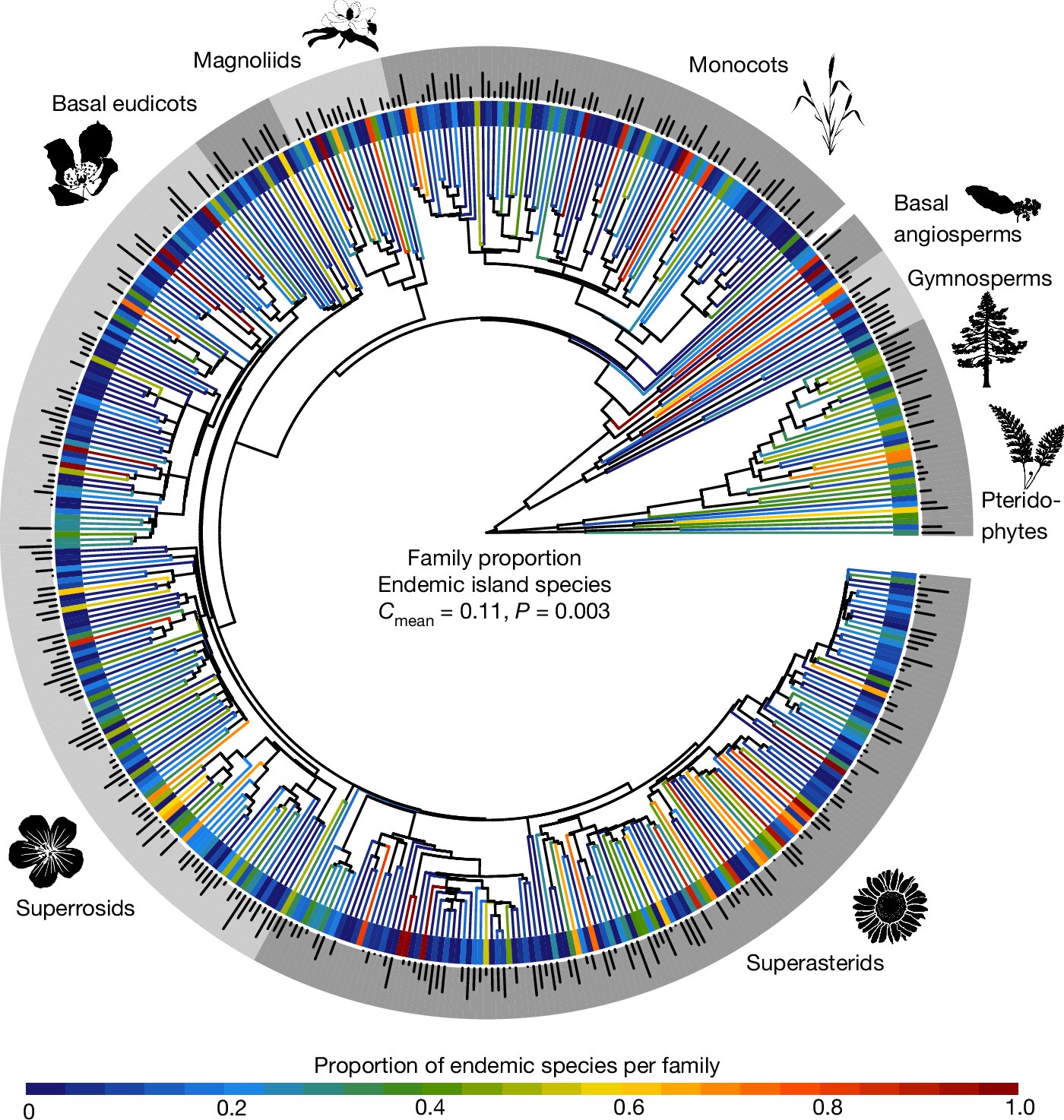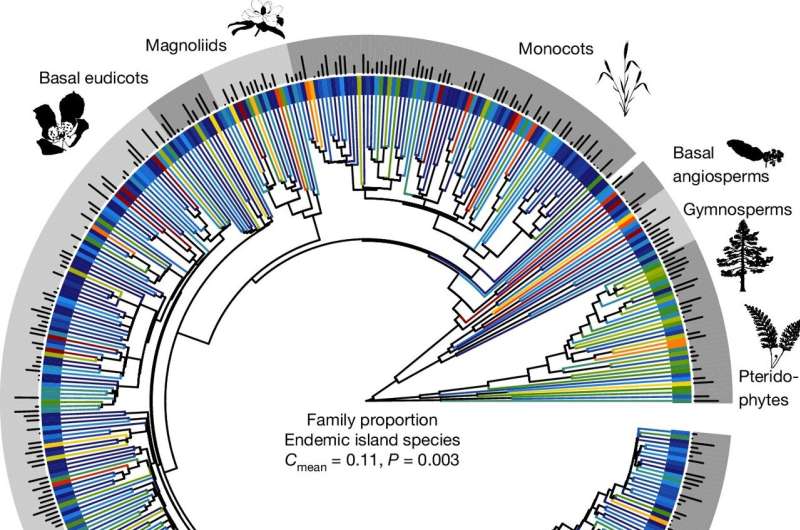

A new study has revealed that islands are home to around one in three of the world’s plant species, despite covering just over 5% of the Earth’s land surface.
Dr. Julian Schrader, from Macquarie University’s School of Natural Sciences, led a team of a dozen researchers from Australia, Germany, Spain, U.S., Greece and Japan in analyzing data on more than 304,103 plants—essentially all species known to science worldwide—uncovering a treasure trove of island biodiversity.
The team found 94,052 species are native to islands. Of these, 63,280 are endemic –found nowhere else in the world—representing 21% of global plant diversity.
The team’s research, published in Nature, provides the first comprehensive assessment of vascular plants native and endemic to marine islands worldwide.
Native plants naturally occur on an island, while endemic plants are found only on that specific island or group of islands and nowhere else in the world. Vascular plants make up most plants on Earth and include trees, shrubs, herbs, ferns and grasses. They have a circulatory system, unlike non-vascular plants such as mosses and liverworts.
“This is the first time we have had such a complete understanding of which species are where, globally,” says Dr. Schrader. “We can now explore the conservation status of some of our rarest plants and come up with distinct strategies to conserve them, such as identifying botanical gardens that could host rescue populations.”
The study found that only 6% of islands supporting endemic species met a United Nations goal to protect 30% of land and sea areas by 2030.
Hotbeds of island diversity
The study identified several centers of plant endemism—areas with high numbers of species found nowhere else. Nearly all are large, tropical islands with complex topography and a long history of isolation.
Topping the list is Madagascar, home to a staggering 9,318 endemic plant species. This African island nation is followed closely by New Guinea (8,793 endemic species), Borneo (5,765), Cuba (2,679) and New Caledonia (2,493).
“Large geographical distances, and climates and environments that differ from other archipelagos or mainland regions, lead to a high rate of evolution of new species, or ‘speciation,'” says Dr. Schrader.
Such isolation has led to some remarkable examples of plant evolution; in Hawaii, 126 species of lobeliads trace their lineage back to a single colonization event. However, many plants that have evolved in isolation, developing unique adaptations to their original ecosystems, may be poorly equipped to compete with introduced species.
Climate change poses an additional threat. Rising sea levels and increased frequency of extreme weather events are potentially devastating for low-lying islands and their unique flora.
The team has created a standardized checklist of all known vascular plants occurring on islands, documenting their geographical and phylogenetic distribution and conservation risk. The dataset also provides a crucial baseline for monitoring changes in island plant communities over time and could offer a roadmap for prioritizing protection efforts.
“In French Polynesia, I was trying to find one of the rarest plants in the world, the flowering shrub called tiare apetahi (Sclerotheca raiateensis), with only a few individuals left in the wild,” says Dr. Schrader.
The plant has large, fragrant flowers and holds an important place in local culture and stories, but has been over-harvested and devoured by rats.
“Nobody has yet figured out how to grow this species in botanical gardens—so it might go extinct in the near future,” Dr. Schrader says.
More information:
Julian Schrader, Islands are key for protecting the world’s plant endemism, Nature (2024). DOI: 10.1038/s41586-024-08036-1. www.nature.com/articles/s41586-024-08036-1
Provided by
Macquarie University
This content was originally published on The Macquarie University Lighthouse.
Citation:
Island biodiversity: Comprehensive assessment finds one in three plant species call islands home (2024, October 16)
retrieved 16 October 2024
from https://phys.org/news/2024-10-island-biodiversity-comprehensive-species-islands.html
This document is subject to copyright. Apart from any fair dealing for the purpose of private study or research, no
part may be reproduced without the written permission. The content is provided for information purposes only.